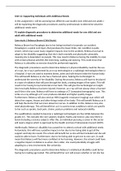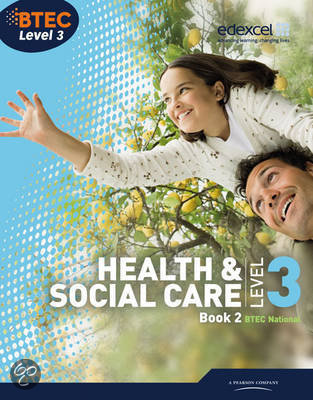Unit 12: Supporting Individuals with Additional Needs
In this assignment, I will be assessing two different case studies (one child and one adult), I
will be explaining the diagnostic procedures used by professionals to determine what the
additional needs were.
P1 explain diagnostic procedures to determine additional needs for one child and one
adult with additional needs
Case study 1 Rebecca Brown (Child Study)
Rebecca Brown has Paraplegia due to her being involved in traumatic car accident.
Paraplegia is a spinal cord injury that paralyses the lower limbs. Her condition is quite
severe, which may cause many negative impacts. Due to the accident, Rebecca has had to
adapt to her disability suggesting that she is both mentally and physically vulnerable,
meaning she is dependent on people. This may result in Rebecca having the inability to cope
with certain physical activities like exercising, walking and dancing. This could mean that
Rebecca is unhealthy as exercise should be performed regularly.
The diagnostic procedures used to determine Rebecca’s physical disability could be the use
of x-rays. An x-ray is performed by an x-ray technologist or a radiologic technologist often in
a hospital. X-rays are used to examine bones, joints and soft tissues inside the human body.
This will benefit Rebecca as she has a fractured spine, helping the technologist to
understand the severity of her disability. During the process, Rebecca will have to be placed
in a type of radiation that will pass through her body, creating images of her spine. This will
result in her having to lay horizontal on her back. This will give the technologist an insight
into how badly Rebecca has been injured. However, an x-ray will not always show a fracture
and if this is the case, Rebecca will have to undergo a CT (computed tomography) scan. This
is like an x-ray although a CT scan produces detailed and higher quality images.
Furthermore, Rebecca will also need an MRI (magnetic resonance imaging) scan which will
detect her organs, tissues and other things inside of her body. This will benefit Rebecca as it
will help the doctor find out more about her nerves. In addition to this, Rebecca may also
need physiotherapy. This will benefit her as it is used to treat condition/s which are specific
to her such as sprains, back pain, strains, posture problems and reduced mobility.
The qualifications needed to become a radiologic technologist are five GCSEs between the
grades A-C. This includes the core subjects; English, Maths and Science, plus two/three A
levels (including a science subject). After this, an individual pursuing a career in this sector
will need a degree which is approved by the Health and Care Professionals Council (HCPC).
Intellectually, Rebecca’s disability has caused her to attend a school with additional needs.
Fortunately, this will have a positive impact on her due to her being able to get all the
support and help she needs. The school will benefit her as she will feel included and she will
easily be able to learn. Furthermore, due to her being able to get one to one care, it could
mean that Rebecca will feel more confident in her learning. However, the school could have
a negative impact on Rebecca as when she is older, she could potentially struggle with
adapting to a new environment, like university.
The diagnostic procedures used to determine Rebecca’s intellectual disability could be her
having her reading age tested. This will benefit her as it will ensure whether or not she has





